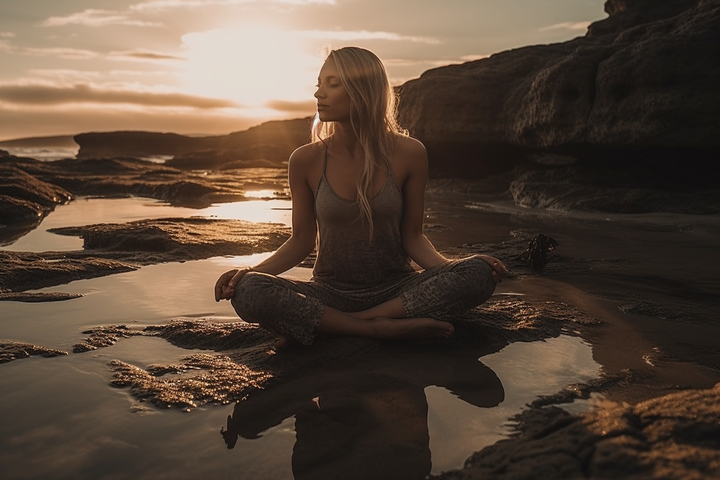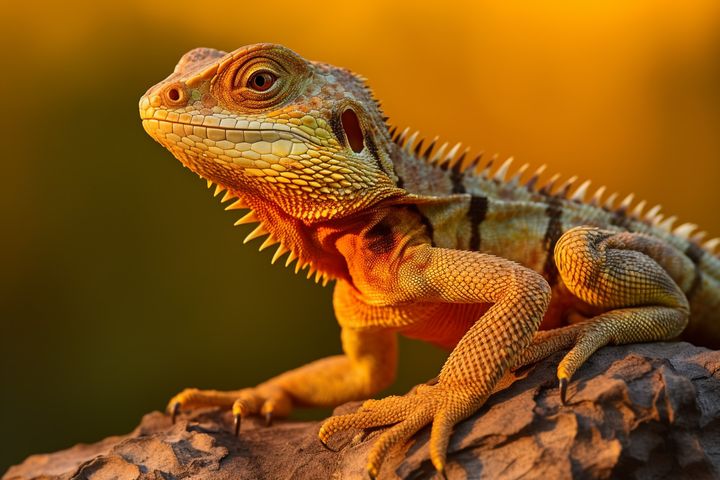Why Supported Child's Pose is a Must-Try
Supported Child’s Pose is more than just a restorative posture; it's a gateway to a balanced mind and body. Incorporating this pose into your regular practice can provide physical relief and mental serenity.

Supported Child's Pose, or Salamba Balasana (pronounced Suh-LUM-buh Bah-LAH-suh-nuh), is a restorative version of the traditional Child's Pose.
This unique modification employs props like bolsters and cushions to make the asana more relaxing and rejuvenating.
Whether you are a beginner seeking comfort or an advanced yogi aiming to deepen your practice, this article guides you through the nuances of this nurturing posture.
Historical Background: The Roots of Balasana
The term Balasana comes from the Sanskrit words "Bala," meaning child, and "Asana," meaning pose. In its original form, Child’s Pose has long been a part of traditional yoga practices. The 'supported' variation, commonly known as Salamba Balasana, is relatively modern and can be credited to the rise of restorative yoga, which emphasizes physical and mental relaxation.
Benefits Compared to Traditional Child's Pose: Why Choose Supported?
Choosing between Supported Child’s Pose (Salamba Balasana) and Traditional Child’s Pose (Balasana) depends on what you seek to achieve in your yoga practice. Here's how the supported version adds unique value:
Enhanced Relaxation
The use of props like bolsters or cushions in Supported Child's Pose makes it easier to maintain the posture for extended periods, offering deeper relaxation.
Gentle on Joints
While Balasana can sometimes put pressure on the knees and hips, the supported variation alleviates this issue by providing extra cushioning.
Mindfulness Boost
The extra comfort in the supported version allows for an easier transition into a meditative state, enhancing your capacity for mindfulness.
Greater Accessibility
Supported Child's Pose is often easier for beginners or those with certain physical limitations. The props make it more approachable, allowing a broader range of practitioners to enjoy its benefits.
Step-By-Step Instructions: Master Supported Child’s Pose
Step 1: Set Up Your Props
Start by placing a bolster or a couple of folded blankets lengthwise on your yoga mat. The prop should be in alignment with the length of the mat to provide optimal support.
Step 2: Begin in Tabletop Position
Come to a tabletop position with your hands under your shoulders and your knees under your hips. Your gaze should be towards the mat.
Step 3: Position the Bolster
Move your knees to either side of the bolster, making sure that your hips can comfortably sink back towards your heels.
Step 4: Lower Down
As you exhale, lower your upper body down onto the bolster. Your chest and abdomen should be supported by the prop.
Step 5: Adjust Arms and Head
Extend your arms alongside the bolster or let them relax by your sides. Turn your head to one side or keep it facing forward, based on what feels comfortable for your neck. If you opt to turn your head to the side, remember to equally balance the time by eventually turning your head to the opposite side to avoid neck strain.
Step 6: Find Your Comfort Zone
Adjust any props as needed to make sure you are comfortable. If you feel any strain or tension, it might be helpful to add an extra blanket or adjust the bolster.
Step 7: Deepen Your Breath
Once comfortable, deepen your breathing. Focus on expanding your ribcage and filling your back with air on each inhale, and releasing tension on each exhale.
Step 8: Hold the Pose
Hold the Supported Child's Pose for anywhere from 1 to 5 minutes, depending on your comfort level. You can gradually increase the time as you become more accustomed to the pose.
Step 9: Mindfulness Check-in
As you hold the pose, maintain a sense of mindfulness. Pay attention to your breath, the points of contact between your body and the mat, and any sensations you may be feeling.
Step 10: To Exit the Pose
To come out of the pose, use your hands to gently press yourself up, lifting your torso away from the bolster. Return to a seated or tabletop position.
Common Mistakes to Avoid: Safeguard Your Practice
Overarching the Lower Back
Some people tend to arch their lower back excessively, which could lead to lumbar discomfort. Make sure your hips are pushing back toward your heels and your spine is long to avoid this.
Putting Pressure on the Knees
If you experience any knee pain, consider placing a folded blanket or cushion under your knees or hips for additional support.
Rushing into the Pose
Especially if you are new to yoga or this particular pose, rushing can prevent your muscles from relaxing into the stretch and might even lead to injury. Take your time getting into and out of the pose to reap its full benefits.
Ignoring Your Breath
Breath is an integral part of any yoga practice. Neglecting to maintain a steady, deep breath while in the pose can compromise the relaxing and restorative aspects of Supported Child’s Pose.
Overstretching Arms or Shoulders
Reaching too far forward or straining your arms can put unnecessary pressure on your shoulders. Keep your arms in a relaxed position that allows your shoulders to remain loose.
Unbalanced Neck Positioning
If your head is turned to one side, remember to balance your neck by switching sides halfway through the pose.
Complementary Poses: Enhance Your Restorative Journey
Incorporating other supported poses alongside Supported Child's Pose can offer a multi-layered, deeply restorative yoga experience. Here are some supported poses that can seamlessly integrate into a practice that includes Supported Child’s Pose.
Supported Savasana (Corpse Pose)
This is the ultimate relaxation pose, providing a profound sense of peace and calm. Using bolsters or blankets to support the knees can make the pose even more restorative. Pairing this with Supported Child's Pose offers a full-body relaxation that helps in resetting the nervous system.
Supported Bridge Pose (Setu Bandha Sarvangasana)
This pose opens up the chest and helps in stretching the back, providing a wonderful counterpose to the rounded spine in Supported Child’s Pose. With the help of props like bolsters or blocks, the pose becomes less straining and more therapeutic.
Supported Pigeon Pose (Eka Pada Rajakapotasana)
Like Supported Child's Pose, this hip opener provides deep relief to the pelvic region. The use of props like cushions or blocks can help sustain the pose for a longer period, making it a restorative practice that complements Supported Child’s Pose well.
Supported Supta Baddha Konasana (Reclining Bound Angle Pose)
This supported pose is excellent for opening up the hips and calming the mind. The use of props makes it accessible and relaxing, serving as a wonderful counterbalance to the curled-up nature of Supported Child’s Pose.
Conclusion: Embrace the Tranquil Journey
Supported Child’s Pose is more than just a restorative posture; it's a gateway to a balanced mind and body. Incorporating this pose into your regular practice can provide physical relief and mental serenity.
If you found this information valuable and would like to stay updated on more yoga insights, tips, and practices, feel free to subscribe 🧘



Comments ()